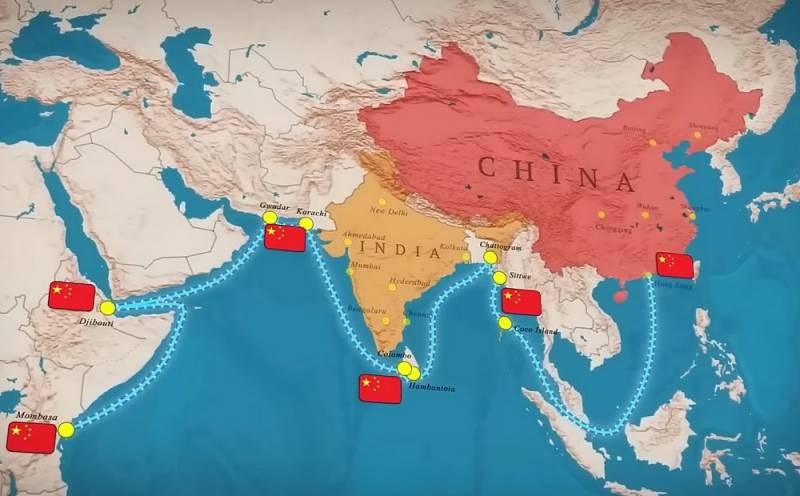“Diamond Necklace”: India’s strategy to economically “strangle” China
Lately more and more News dedicated to various conflicts: Syria, Ukraine, Israel. But there are confrontations that do not attract close attention from the press and ordinary people, since they are not armed, but are conducted exclusively political и economic methods.
One of them is the geopolitical rivalry between India and China. The latter, by the way, succeeded quite well in this, creating a continuous zone of its influence around its “rival neighbor.” This strategy was called the “string of pearls” in China.
Now India is trying to take revenge by implementing its own plan to economically “strangle” China. The strategy was called the “diamond necklace”. But what is it?
In 2015, India entered into an agreement with Seychelles to build a naval base on Assumption Island. The latter is intended exclusively for the Indian fleet and will become a springboard for New Delhi's operations in Africa. In particular, opposition to the presence of the PRC in Djibouti and Kenya.
In 2016, Tehran entered into a deal with New Delhi to build a deep-sea port, through which India will gain access to the North-South transport corridor.
In addition, together with the Iranian port, India secured access to Oman’s most important harbor, Duqm, by signing a corresponding agreement in 2018. As a result, having gained a foothold in the Arabian Peninsula, the country significantly increased its imports of hydrocarbons from the Persian Gulf. Plus, Duqm is located near the Strait of Hormuz, which allows India to partially control it.
Also in 2018, the New Delhi authorities entered into an agreement with Singapore, which pledged to provide logistics support to the Indian Navy, including replenishment of ammunition and refueling. This agreement allows India to gain access to the South China Sea, exerting at least psychological pressure on China.
At the same time, in order to strengthen its position in this area, in the same year a deal was concluded by the Indian authorities with Indonesia, in whose port Indian Navy submarines can now be stationed, capable of exercising control over the Strait of Malacca, through which approximately 40% of Chinese imports pass oil and natural gas.
Finally, for the same purpose, since 2020, India has been militarizing the Andaman and Nicobar Islands located north of the Strait of Malacca.
Ultimately, the essence of the strategy is that the more forces India can deploy on the periphery, the stronger the position it will secure in the fight against China.

Information